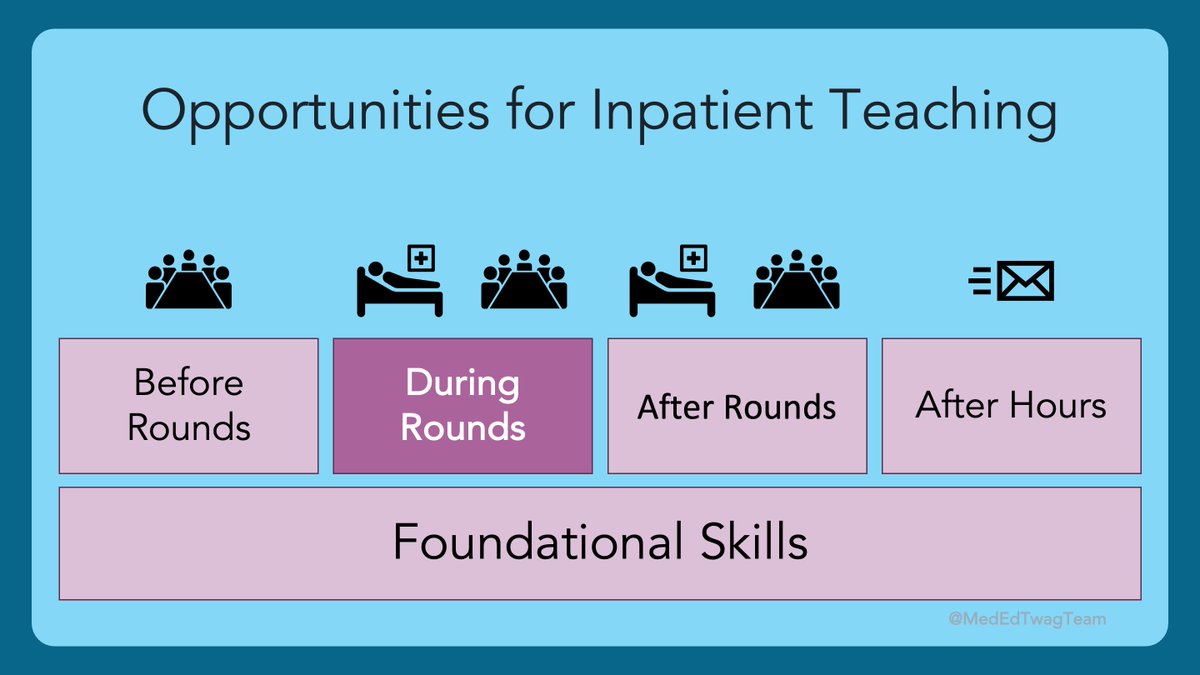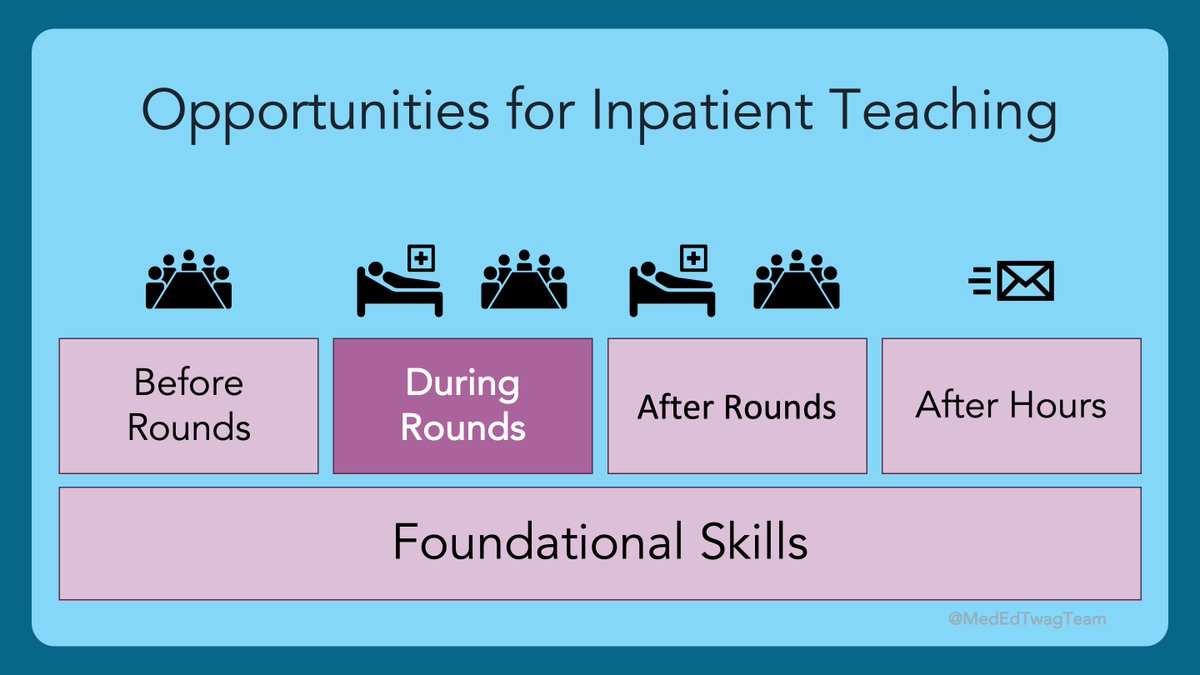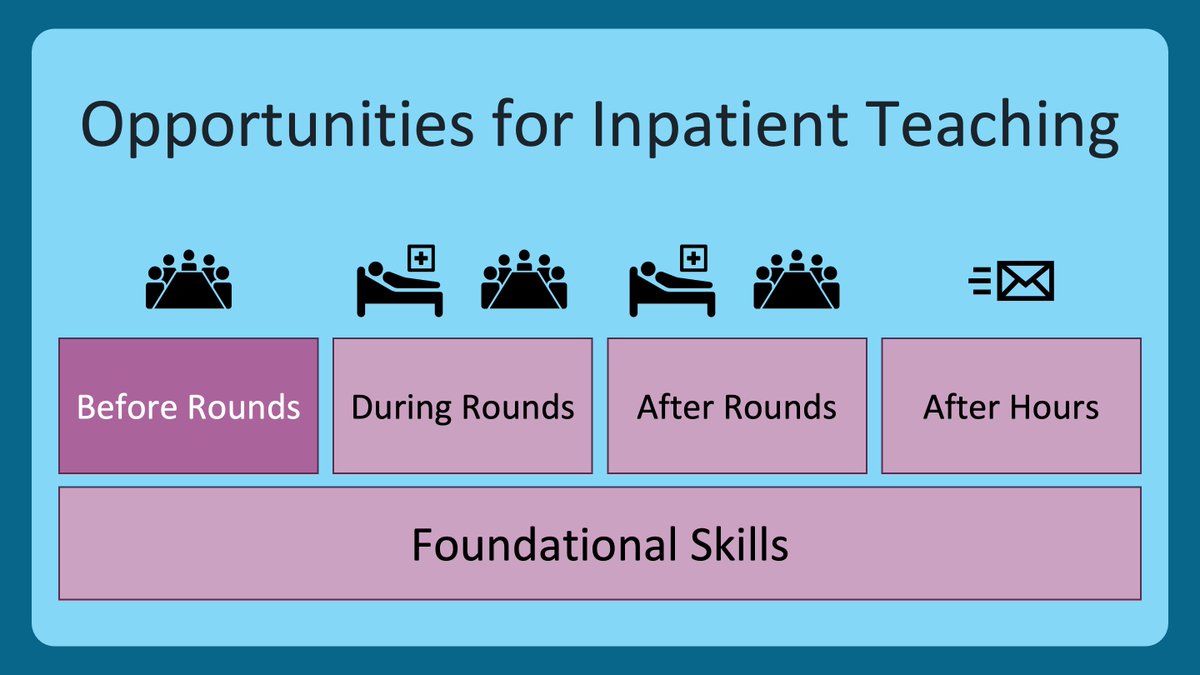1/ Hey #MedTwitter & #MedEd Friends!
We are the #MedEdTwagTeam here with another #TweetorialTuesday!
Today we get into the content of our Feedback threads.
Follow: @GStetsonMD, @JenniferSpicer4, & @MedEdTwagTeam to stay up to date.
We are the #MedEdTwagTeam here with another #TweetorialTuesday!
Today we get into the content of our Feedback threads.
Follow: @GStetsonMD, @JenniferSpicer4, & @MedEdTwagTeam to stay up to date.
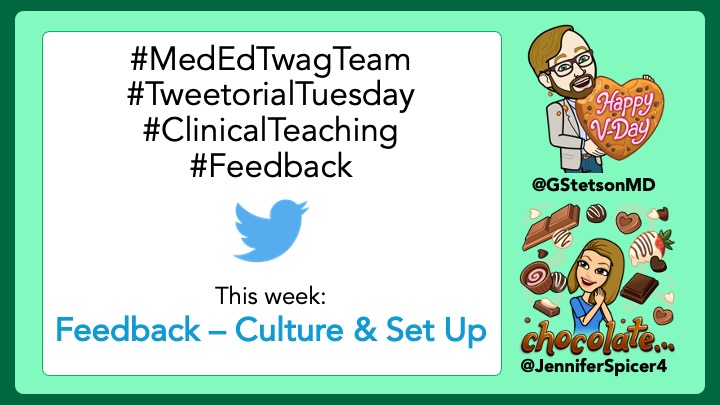
2/ Here is the 10-week journey we are taking you on to discuss all things #Feedback.
Today we will be talking about developing a #FeedbackCulture through setting expectations.
Also, here is a primer on setting expectations:
Today we will be talking about developing a #FeedbackCulture through setting expectations.
Also, here is a primer on setting expectations:
https://twitter.com/GStetsonMD/status/1303329970526105600
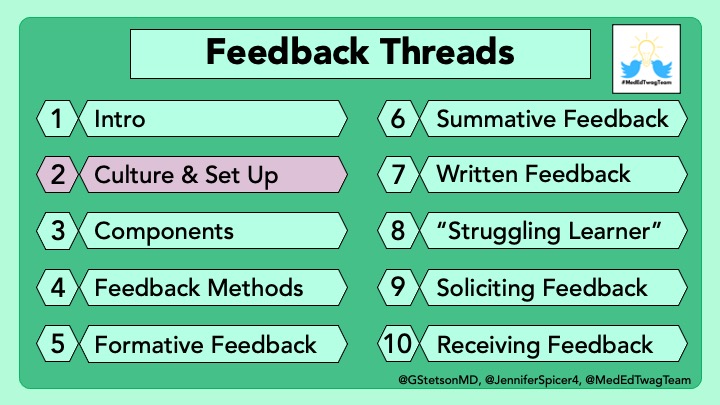
3/ The first thing to do is instill a #GrowthMindset on your team.
The growth vs. fixed mindset dichotomy was popularized by Dr. Carol Dweck, PhD through her book – Mindset. It is a great read/listen. Below is a quick summary:
The growth vs. fixed mindset dichotomy was popularized by Dr. Carol Dweck, PhD through her book – Mindset. It is a great read/listen. Below is a quick summary:
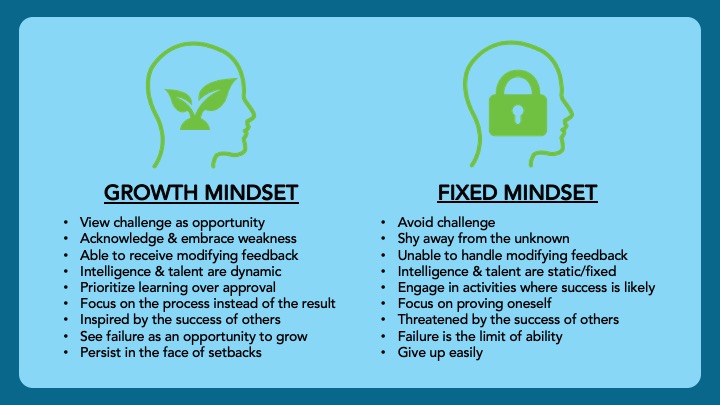
4/ A #GrowthMindset is cultivated by the words we use and the examples we set through humility. I do this in 3 ways:
1⃣Tie growth to evaluation
2⃣Explain where I am growing
3⃣Give example of practice changing feedback
📝Thread on Allyship and Upstanding:
1⃣Tie growth to evaluation
2⃣Explain where I am growing
3⃣Give example of practice changing feedback
📝Thread on Allyship and Upstanding:
https://twitter.com/GStetsonMD/status/1298257344233525257

5/ #GrowthMindset provides learners w/ motivation to receive & incorporate feedback.
The next key piece of #FeedbackCulture is relationships. I like two concepts for this:
💡 – The Educational Alliance
pubmed.ncbi.nlm.nih.gov/25406607/
💡 – Feedback as Coaching
pubmed.ncbi.nlm.nih.gov/30907439/
The next key piece of #FeedbackCulture is relationships. I like two concepts for this:
💡 – The Educational Alliance
pubmed.ncbi.nlm.nih.gov/25406607/
💡 – Feedback as Coaching
pubmed.ncbi.nlm.nih.gov/30907439/
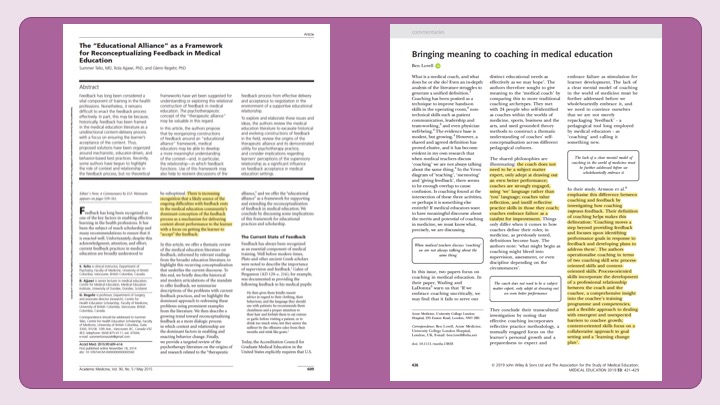
6/ Both ideas are wonderful, and I love them equally. But when you strip them down, they leave us with some common principles: 
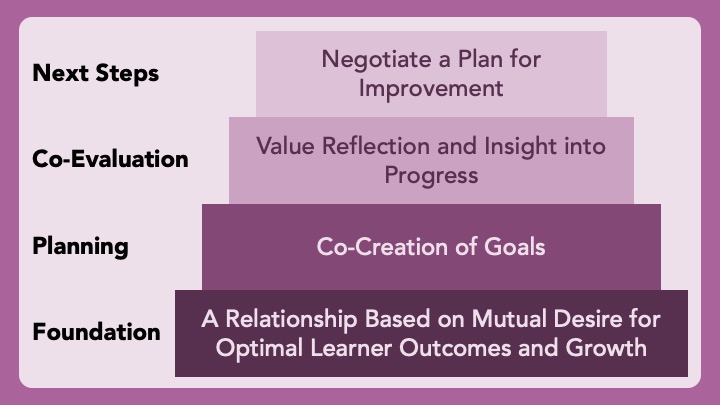
7/ A note about #FeedbackAsCoaching. This is a great way to think about giving feedback to your ”superstar” learners.
Think about Serena Williams’ or Simone Biles’ coaches…I have a sneaking suspicion they are not as talented as their coachees, yet still coax out improvement.
Think about Serena Williams’ or Simone Biles’ coaches…I have a sneaking suspicion they are not as talented as their coachees, yet still coax out improvement.
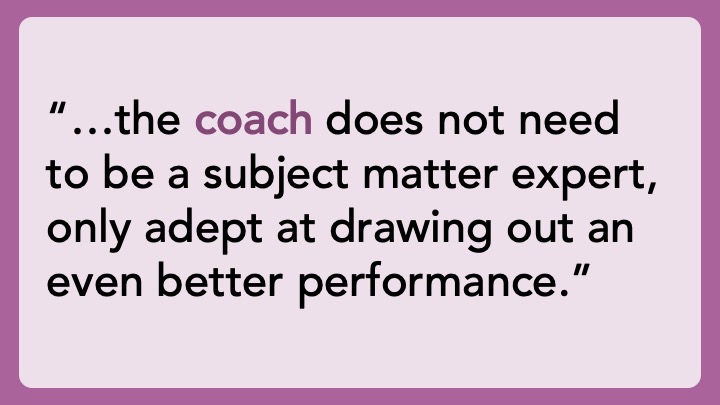
8/ Last week there was some great chatter from @cjchiu, @nsrosenberg, & @EmmGeezee about #MotivationalInterviewing as a framework for feedback.
Yes! This idea aligns perfectly with the #EducationalAlliance and #FeedbackAsCoaching.
Yes! This idea aligns perfectly with the #EducationalAlliance and #FeedbackAsCoaching.
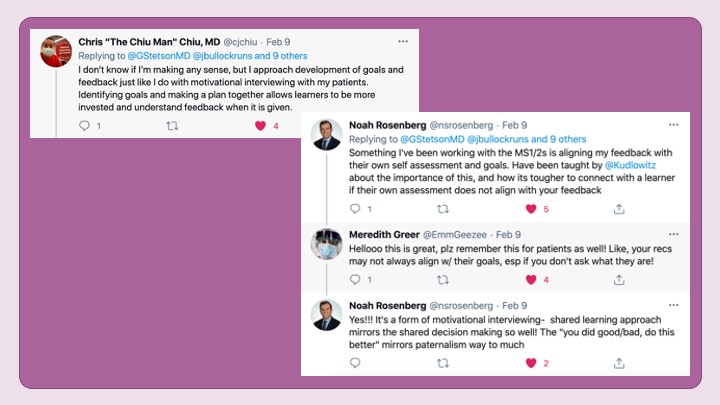
9/ So, meet with each learner & make clear you are invested in them, & all feedback is in the spirit of continuous improvement.
Then, you need to co-create some goals. Doing this serves a few purposes:
1⃣Demonstrates Commitment
2⃣Encourages Metacognition
3⃣Engenders Trust
Then, you need to co-create some goals. Doing this serves a few purposes:
1⃣Demonstrates Commitment
2⃣Encourages Metacognition
3⃣Engenders Trust
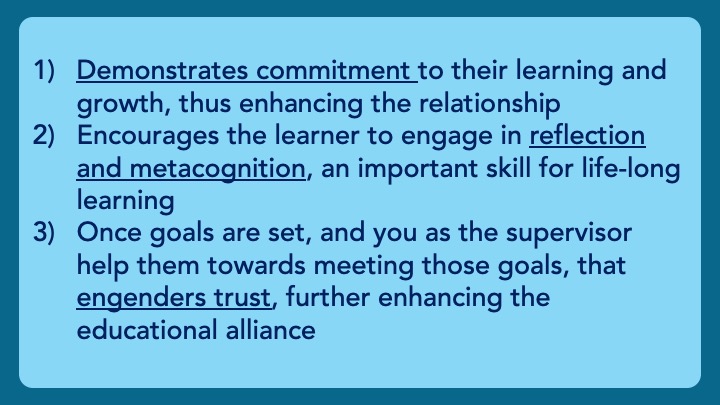
10/ Thanks folx for joining us to discuss feedback culture. Please, share & leave us a comment.
We ❤️ our #MedTwitter and #MedEd communities.
Next #TweetorialTuesday, @JenniferSpicer4 will be breaking down the components of effective feedback.
We ❤️ our #MedTwitter and #MedEd communities.
Next #TweetorialTuesday, @JenniferSpicer4 will be breaking down the components of effective feedback.
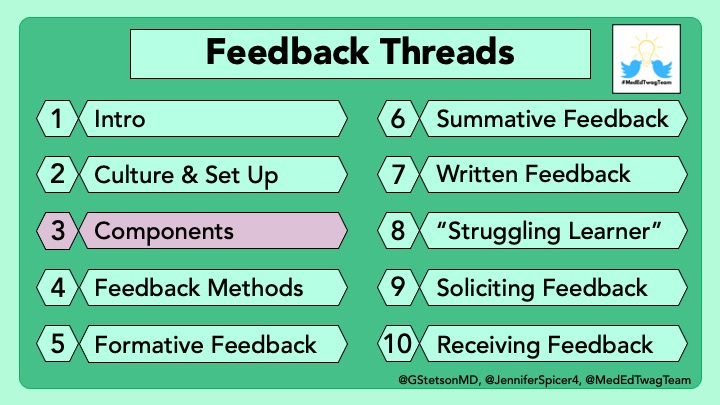
• • •
Missing some Tweet in this thread? You can try to
force a refresh



